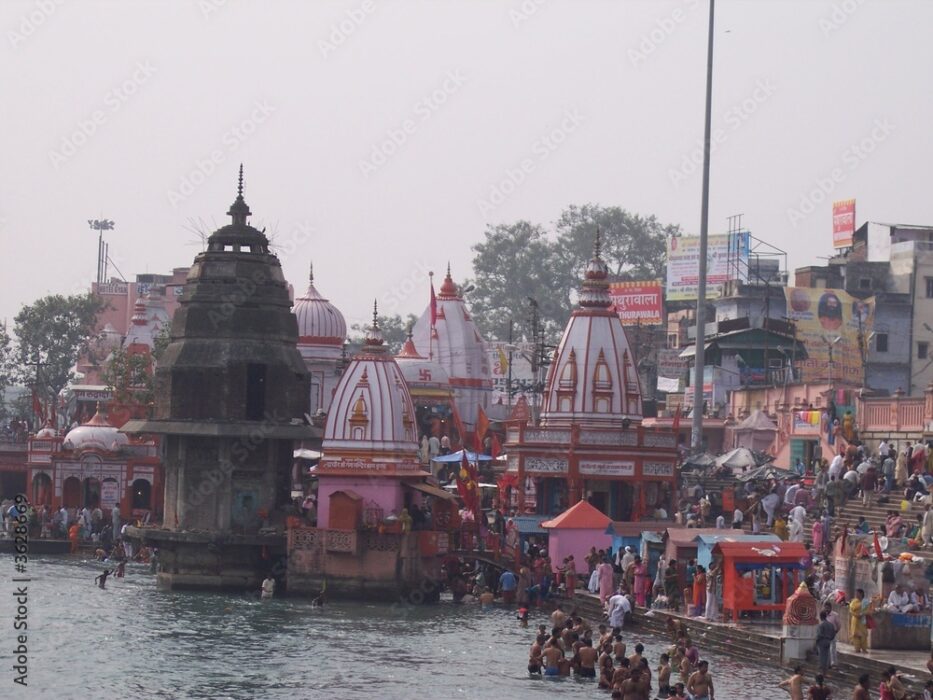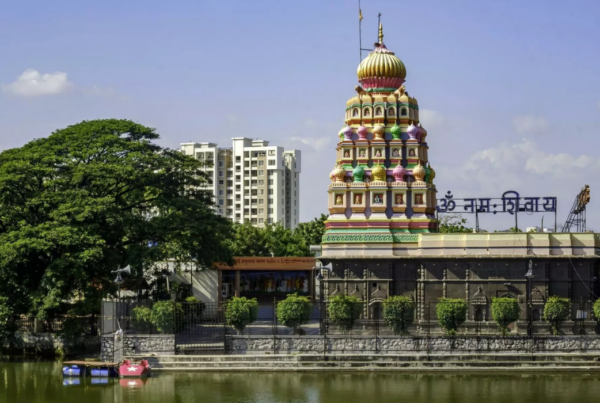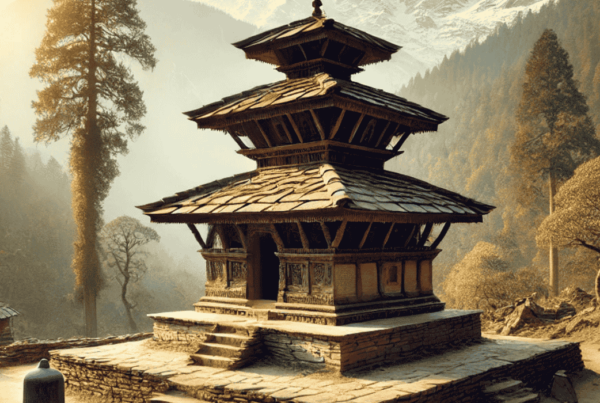History of Haridwar:
Haridwar Uttarakhand, a city steeped in history and spirituality, holds immense significance in Hindu mythology and historical annals. Known as Kapilasthana, Gangadvāra, and Mayapuri in ancient scriptures, it serves as the gateway to the Char Dham pilgrimage sites of Badrinath, Kedarnath, Gangotri, and Yamunotri.
According to the Mahabharata, Haridwar Uttarakhand, also called Gangadwara, was frequented by celestial beings like Gandharvas, Yakshas, Rakshasas, and Apsaras. Sage Agastya’s penance here with his wife, Lopamudra, adds to its sanctity. The ashram of Sage Kapila further enhances its ancient heritage.
Legend has it that King Bhagiratha brought the sacred Ganges River down from heaven to cleanse his ancestors’ souls. The tradition of bringing ashes to Haridwar for salvation persists among devout Hindus. Lord Vishnu’s footprint at Har Ki Pauri and the association with Sage Kapila enhance the city’s spiritual allure.
Throughout history, Haridwar witnessed the rule of various empires, including the Maurya and Kushan empires. Its archaeological findings date back to the terra cotta culture, validating its ancient existence. Accounts from Chinese traveler Huan Tsang shed light on Haridwar’s past during King Harshavardhana’s reign.
Medieval Period History:
During the medieval period, Haridwar was under the Delhi Sultanate’s rule and faced invasions from Central Asian conquerors like Timur Lang. Guru Nanak’s visit in the 16th century is commemorated by the Nanakwara Gurudwara.
Under Mughal rule, Haridwar thrived as a sacred Hindu site, attracting pilgrims from across the Indian subcontinent. Its mention in Ain-e-Akbari reflects its status as one of Hinduism’s seven sacred cities.
The city’s cultural heritage is evident in its ancient havelis, mansions, and religious sites like Har Ki Pauri, Chandi Devi Temple, and Mansa Devi Temple. The construction of the Bhimgoda dam in the 1840s marked a significant development, though it altered the Ganges’ flow.
In modern times, Haridwar Uttarakhand has become a center for education and spirituality, with institutions like Gurukul Kangri Vishwavidyalaya and Dev Sanskriti Vishwavidyalaya. Industrial giants like BHEL have also contributed to the city’s growth.
Haridwar’s rich history, spirituality, and culture continue to attract visitors and pilgrims worldwide, embodying India’s ancient heritage and religious traditions.
Best Time to Visit Haridwar Uttarakhand:
The ideal time to visit Haridwar Uttarakhand is from October to February, experiencing chilly weather with temperatures below 10°C and moderate crowds. March to June offers moderate weather with clear skies and occasional rain, ideal for avoiding large gatherings. Festivals like Baisakhi and Kanwar Mela draw crowds in April and July. Engage in temple festivities during the peak season and enjoy bathing in the holy river and sunset views from Lakshman Jhula during moderate weather.
Religious sites:
In the Hindu tradition, people revere Haridwar for its ‘Panch Tirth’ (Five Pilgrimages), which holds immense spiritual significance. Numerous temples and ashrams dot Haridwar, serving as spiritual retreats for devotees. The city upholds its religious sanctity by strictly adhering to traditions, including the prohibition of alcohol and non-vegetarian food.
Har Ki Pauri, Haridwar:
Har Ki Pauri, a revered ghat in Haridwar, dates back to the 1st century BCE, attributed to King Vikramaditya. Legend claims he built it in memory of his brother, Bharthari. The evening Aarti ceremony, honoring Goddess Ganga, attracts thousands. Dussehra’s canal drying symbolizes Mother Ganga’s journey, integral to Haridwar’s culture.
Chandi Devi Temple, Haridwar:
Perched on the eastern bank of the Ganges River on Neel Parvat, the Chandi Devi Temple venerates Goddess Chandi. Built in 1929 CE by King Suchat Singh of Kashmir, it commemorates ancient legends. Legend suggests Adi Shankaracharya established the main deity statue in the 8th century CE. Accessible via a 3 km trek or ropeway, it’s a significant pilgrimage site in Haridwar Uttarakhand.
Mansa Devi Temple, Haridwar:
Perched atop Bilva Parvat, the Mansa Devi Temple is renowned as the fulfillment of desires. Tourists are drawn to its panoramic city views accessible via cable cars. Housing two idols of the Goddess, visitors seek spiritual solace amidst natural beauty. The serene ambiance offers a tranquil escape for pilgrims and sightseers alike.
Makarvahini Temple, Haridwar:
Situated in the vicinity of Birla Ghat, near Laltarao Pul, stands a sacred temple devoted to Goddess Ganga. Several decades ago, Jayandra Saraswati, the Shankaracharya of Kanchi Kamakoti, founded this revered sanctuary. The temple, constructed in the distinctive South-Indian architectural style, upholds a unique tradition of adorning the goddess with an assortment of vegetables and dry fruits, honoring her as Shakumbhari during the Ashtami Pooja, celebrated on the eighth day of Navratri.
Daksheswara Mahadev Temple, Haridwar:
In Kankhal, the Daksha Mahadev Temple stands as a revered site, commemorating the legend of King Daksha’s insult to Shiva and Sati’s self-immolation. Another notable site is the Sati Kund, where believers hold that Sati sacrificed herself through immolation, further adding to the area’s spiritual significance.
Bharat Mata Mandir, Haridwar:
Bharat Mata Mandir, inaugurated in 1983 by Indira Gandhi, is a towering temple dedicated to Mother India. Rising eight stories tall, each floor represents a different era in Indian history, showcasing the country’s rich heritage. From honoring heroes and revered women to celebrating religious harmony, the temple is a testament to India’s cultural diversity.
Educational institutions in Haridwar Uttarakhand:
Gurukula Kangri University:
Gurukul Kangri University, situated in Kankhal on the Ganges banks, is one of India’s oldest universities, founded in 1902 by Swami Shraddhananda based on Arya Samaj principles. Notable visitors include British Trade Union leader Charles Freer Andrews and Prime Minister Ramsay MacDonald, attracted by its unique Gurukul-based education system.
Dev Sanskriti Vishwavidyalaya, Haridwar:
Established in 2002 by the Uttarakhand Government, Dev Sanskriti Vishwavidyalaya is a fully residential university. Operated by the Shri Vedmata Gayatri Trust, headquartered in Shantikunj, Haridwar, it offers diverse courses in Yogic Science, Alternative Therapy, Indian Culture, Tourism, Rural Management, Theology, and Spiritual Counseling, including distance learning programs.
Uttarakhand Sanskrit University:
The Government of Uttarakhand established the university with a commitment to exploring ancient Sanskrit scriptures and texts. Its curriculum includes the study of ancient Hindu rituals, culture, and traditions. The university proudly showcases a building designed in the style of ancient Hindu architecture, adding to its cultural significance and ambiance.
Chinmaya Degree College, Haridwar:
Located in Shivalik Nagar, approximately 10 kilometers (6.2 miles) from the city of Haridwar, this institution stands as one of the prominent science colleges in the area.
Sheel Institute, Haridwar:
This institute, recognized as one of the premier computer institutes in Haridwar, is located in Shivalik Nagar, just 10 kilometers (6.2 miles) from Haridwar city, Uttarakhand.
Other schools, Haridwar:
- Delhi Public School, Haridwar
- Kendriya Vidyalaya, B.H.E.L. Haridwar
- DAV Central Public School, Jagjeetpur
- Achievers Home Public School, Jagjeetpur
- Children Foundation Academy, Haridwar
- Shivedale School, Jagjeetpur
Important areas within the city:
B.H.E.L., Ranipur Township, Haridwar:
Bharat Heavy Electricals Limited (BHEL) campus, a prestigious Maharatna PSU, covers 12 square kilometers. Within its premises, the facility accommodates both the Heavy Electricals Equipment Plant (HEEP) and the Central Foundry Forge Plant (CFFP), boasting a workforce of over 8000 skilled employees. The campus, organized into six sectors, provides excellent residential, educational, and medical facilities in Haridwar Uttarakhand.
Bahadrabad – 7 km (4.3 mi), Haridwar:
Located on the Haridwar–Delhi National Highway, 7 kilometers from Haridwar, this area is near Pathri village, housing the Bhimgoda Barrage on the Upper Ganges Canal since 1955. It also hosts a block development office supervising progress in surrounding villages like Khedli, Kisanpur Rohalki, Atmalpur Bongla, Sitapur, Alipur, and Salempur.
Shivalik Nagar, Haridwar:
This area stands as one of the most recent and expansive residential zones in Haridwar, divided into multiple clusters. Initially planned as a residential colony for BHEL employees, its significance has expanded significantly with the emergence of SIDCUL. As a result of its proximity, the region has experienced a rapid increase in population and economic activity.
Transport:
Haridwar serves as the administrative headquarters of the Haridwar district, boasting excellent connectivity with other towns within the district as well as throughout the state.
Road Transport:
National Highway 58 traverses through Haridwar, linking Delhi to Mana Pass, offering connectivity to Ghaziabad, Meerut, Muzzafarnagar, Roorkee, and Badrinath.
Moreover, originating from Haridwar, National Highway 74 connects it to Kashipur, Kichha, Nagina, Pilibhit, and Bareilly. The city enjoys excellent bus connectivity with all major cities, with over 150 daily buses available from Delhi to Haridwar.
Railway:
Haridwar Railway Station, part of the Northern Railway zone, offers direct connections to major Indian cities like Kolkata, Delhi, Mumbai, Chennai, and Thiruvananthapuram. It also links to Central Indian cities such as Bhopal, Ujjain, and Indore, facilitating travel across the country’s vast railway network.
Air Facility:
The closest domestic airport to Haridwar is Jolly Grant Airport in Dehradun, situated 35 kilometers (22 miles) away. For international travel, travelers can access the nearest airport, which is the Indira Gandhi International Airport in New Delhi, situated 220 kilometers (140 miles) away from Haridwar.
Frequently Asked Questions (FAQs):
What is the significance of Har Ki Pauri?
Har Ki Pauri is a sacred ghat where King Vikramaditya built a memorial in memory of his brother Bharthari. It is believed that a dip in the Ganges at this ghat cleanses one’s sins.
Why is Haridwar considered a pilgrimage destination?
Haridwar holds immense religious significance in Hinduism because of its association with ancient scriptures, legends, and revered temples, making it highly venerated by devotees.
Believers hold that visiting Haridwar can purify the soul and bring spiritual enlightenment.
How can one reach Haridwar?
Haridwar is well-connected by road, rail, and air. National Highways and the railway station provide easy access; moreover, the nearest airport is Jolly Grant Airport in Dehradun, facilitating travel.
What educational opportunities does Haridwar offer?
Haridwar is home to prestigious institutions like Gurukula Kangri University, and Dev Sanskriti Vishwavidyalaya, offering courses in traditional Vedic studies, modern sciences, and holistic education.
What are the major attractions in Haridwar?
Major attractions include Har Ki Pauri, Chandi Devi Temple, Mansa Devi Temple, Bharat Mata Mandir, and various other temples and ghats along the Ganges.
Conclusion:
Haridwar’s historical legacy, religious significance, educational institutions, and modern developments make it a multifaceted city that attracts pilgrims, scholars, and tourists alike. Its timeless charm continues to captivate visitors, leaving an indelible mark on their hearts and minds.








